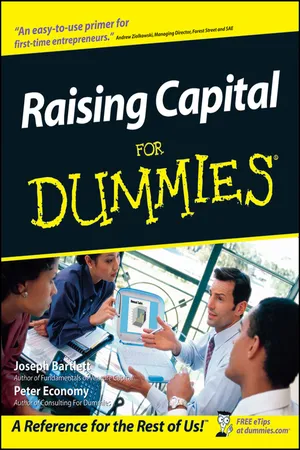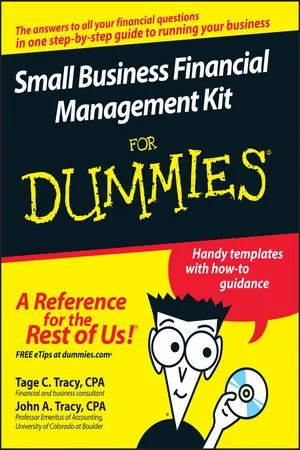Cash Flow Improvement
Cash flow improvement refers to the process of increasing the amount of cash coming into a business or reducing the amount of cash going out. This can be achieved through various strategies such as optimizing accounts receivable, managing inventory levels, negotiating better payment terms with suppliers, and increasing sales. Improving cash flow is essential for maintaining financial stability and supporting business growth.
6 Key excerpts on "Cash Flow Improvement"
- eBook - ePub
Accounting and Finance for Managers
A Business Decision Making Approach
- Matt Bamber, Simon Parry(Authors)
- 2020(Publication Date)
- Kogan Page(Publisher)
...07 Cash and working capital management OBJECTIVE To provide an understanding of the importance of cash management to a business and the impact of working capital management strategies on cash flow and liquidity. LEARNING OUTCOMES After studying this chapter, the reader will be able to: Discuss the importance of cash management to a business. Interpret a cash budget and identify potential problems. Formulate strategies for improving cash flow and liquidity. KEY TOPICS COVERED The cash-flow cycle. Information which a cash budget provides, and why this is important. The format and construction of a cash-flow forecast. The evaluation of different decisions which impact on cash requirements (financing of asset purchases, credit terms to customers). Strategies for improving cash flow. MANAGEMENT ISSUES Managers need the ability to evaluate the impact of managerial decisions and strategies on cash requirements. They also need to be able to analyse cash budgets and use them to make appropriate managerial decisions. Introduction Planning and managing cash flows lies at the centre of business success. We hear many aphorisms which confirm how important this is: ‘cash is king’ and ‘cash is the lifeblood of the business’ are two commonly used expressions. Why is this the case? Quite simply, a business cannot survive without cash. It is possible for a business to function for several years without making a profit provided that it still has cash. But once the cash runs out the business will very quickly fail. This was the fate of many so-called ‘dot-com’ businesses in the 1990s. Extract 7.1: Cash flow and small business failure Dun and Bradstreet, one of the world’s leading credit rating agencies, report that 90 per cent of small business failures are caused by poor cash flow. Why does a business need cash? Cash is needed in a business for a number of reasons: to purchase inventory and to pay wages, rent, utility bills etc...
- eBook - ePub
Changing the Game
The Playbook for Leading Business Transformation
- Michael Vullings, Graham Christie(Authors)
- 2021(Publication Date)
- Wiley(Publisher)
...Typical agenda items for discussion are: overall summary of current cash flow position review of variance between budgeted and actual cash level, and variance from the prior month review of individual transactions for evaluation, comment and approval. The overall cash position should be managed to clearly defined targets determined by the overall cash requirements of the company. The minimum level of cash the company should generate from operations, sometimes measured as Free Funds from Operations (FFO), needs to be sufficient to service debts — that is, it should not fall below the level of debt repayments and interest due. Additionally, targets should factor in a liquidity buffer, and start to capture any emerging cash needs to support the overall transformation program — for example, cash to selectively build new capabilities or support capital build programs. 3. Determine cash initiatives If cash shortages are anticipated (a variance between actual cash flow and cash flow targets), actions will be required to close the gap. Pinpointing the most effective actions to take requires that cash levers be identified and prioritised to determine the sources of greatest leverage. Operating expenses, capital structure and capital turnover all provide a range of levers for improving a company's cash position. Prioritisation and selection of initiatives should consider the feasibility and impact of each lever to develop a ranked list of initiatives. The size of the gap and the urgency to close it will determine the scope of cash management efforts. Initiatives frequently used to drive near-term cash improvements are outlined in figure 1.1 (pp. 6 – 7), and typically include: Overhead reductions. Manage expense practices ranging from mild to harsh. Fixed cost reductions. Establish a fixed cost reduction plan and mobilise a dedicated team, typically with multiple waves of refinement. Borrowing program...
- eBook - ePub
- Joseph W. Bartlett, Peter Economy(Authors)
- 2011(Publication Date)
- For Dummies(Publisher)
...Chapter 19 Ten Steps to Improve Your Cash Flow — Now! In This Chapter Requiring immediate payment Invoicing more often Budgeting your cash Staying on top of your accounts receivable Making sure that your invoices are right W hen you own your own business, or when you’re involved in the management of one, you’re probably well aware of the importance of cash flow — the difference between what comes in and what goes out. Cash is the lifeblood of every organization. It pays for your employees’ salaries, their medical benefits, the chairs they sit in, and the computers they use to do their jobs. It pays your company’s rent or mortgage payment, and it pays to keep the lights on and the water running. It pays your salespeople’s expense accounts, and it pays for your outside accounting firm, your corporate lawyer, and your overnight delivery charges. Cash goes in and out of a business all the time. Not all cash flows are created equal, however. There is the good kind of cash flow (positive, when you’re bringing more money into your bank account than you’re sending out of it) and the bad kind of cash flow (negative, when you’re sending more money out of your bank account than you’re bringing into it). Every business experiences positive and negative cash flows — it’s a natural part of doing business. If your burn rate — the speed at which you spend your cash — is too high, and your cash isn’t being constantly replenished fresh from the sales of products or services, you soon find yourself in financial trouble. Smart businesses manage their cash flows to maximize positive cash flows and minimize negative ones. In this chapter, we take a close look at how to create more positive cash flow...
- eBook - ePub
- Michael W. Fountain, Thomas W. Zimmerer(Authors)
- 2018(Publication Date)
- SAGE Publications, Inc(Publisher)
...A business that is showing a profit on its income statement can still fail if it does not have cash to meet its financial obligations. Decreases in cash occur when the business makes purchases of inventories, parts, or materials for production. As discussed previously, cash outflow is high for new business ventures at the beginning of the cash flow cycle: there will be purchases for inventory and payroll and production expenses, and these will always lead the cash inflow that comes from collecting receivables. The reality is that, on many occasions, a business grows at a rapid pace, and it expends all of its cash—paying employees, managers, suppliers, and creditors—until cash is completely expended and the business is no longer able to meet its financial obligations. Banks, the normal source for loans, are reluctant to provide additional financing in this circumstance because their managers will see the entrepreneur as incompetent for allowing this cash crisis to occur. Without additional cash, the firm cannot meet obligations to creditors. When this occurs, creditors can file an action with the courts to force the business into bankruptcy in an attempt to recover some of the money owed to them. The bottom line is always the same: Cash is king. Cash Flow Process Chapter 5 briefly discussed the need for every new business venture to have a statement of cash flow. Cash flow management is critical and involves tracking the sources and uses of funds on, normally, a monthly basis...
- Tage C. Tracy, John A. Tracy(Authors)
- 2011(Publication Date)
- For Dummies(Publisher)
...You start with how much internal cash you’ll generate during the coming year from making profit, and then you build your overall financial plan based on this foundation. A successful business plan includes a carefully thought-out forecast of cash flow from profit. Budgeting cash flow from profit is a big plus in securing loans from banks and raising equity capital. In fact, if you don’t include a convincing projection of cash flow from profit, it will appear that you don’t know what you’re doing. Chapter 4 Keeping Your Business Solvent In This Chapter Understanding liquidity and business solvency Measuring business solvency and liquidity Watching for liquidity traps Tapping sources of liquidity for your business Keying in on financial leverage A ll businesses, at one point or another, have most likely experienced some sort of financial pain when it comes to keeping the doors open and the bills paid. From suppliers demanding payments on outstanding invoices to customers providing every excuse in the book as to why they need extended payment terms, businesses must constantly manage financial resources to ensure that capital is readily available to support their ongoing operations. The concept of keeping a business solvent, on the surface, would appear to be relatively simple from the standpoint of making sure that enough capital is available to meet its current obligations and commitments. While this statement isn’t entirely untrue, the problem with business solvency isn’t so much based in managing short-term financial issues and obligations but rather managing a long-term business plan and making sure that the appropriate amount and type of capital is “readily” available...
- eBook - ePub
- Robert McCallion, Alan Warner(Authors)
- 2010(Publication Date)
- Teach Yourself(Publisher)
...A collective term often applied to this combination of stock, debtors and creditors is working capital and the changes that take place in working capital during a period are usually the major difference between profit and cash flow at the operating level. Insight Working capital is the collective term for the amount tied up in stock and debtors, less credit taken from suppliers. In most major companies, change in working capital is the second most important variable to be monitored, in addition to operating profit. A financial plan must therefore provide a projection of the likely working capital levels based on sales estimates and any likely changes in company practices and the business environment. The following questions should be asked: Stock How will the projected growth (or decline) in sales levels impact stock? Are we changing any of our buying and stock control practices? How will price increases impact our stockholding? Debtors How will the projected growth (or decline) in sales impact the level of debtors? (Growth in sales will, all things being equal, inevitably cause an increase in debtors.) Are we changing the terms of payment for any of our customers? Is there likely to be a change in the time that customers delay payment, maybe because of a more challenging economic environment? Are we changing our cash collection practices? Creditors How will the projected growth (or decline) in sales and stock levels – and therefore the amount of purchases – impact the level of creditors? Will our suppliers change their terms of payment? Will we be using new suppliers who might have different terms of payment? Can we pay more slowly without impacting operations? Can we pay more quickly and make cost savings? Insight Good cash flow planning is about asking key questions, receiving unbiased answers and converting the implications into cash estimates...





